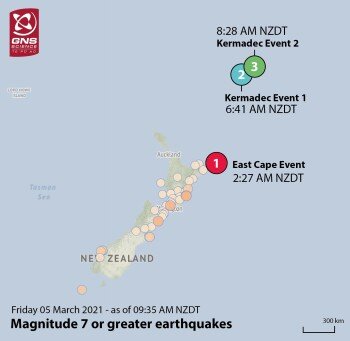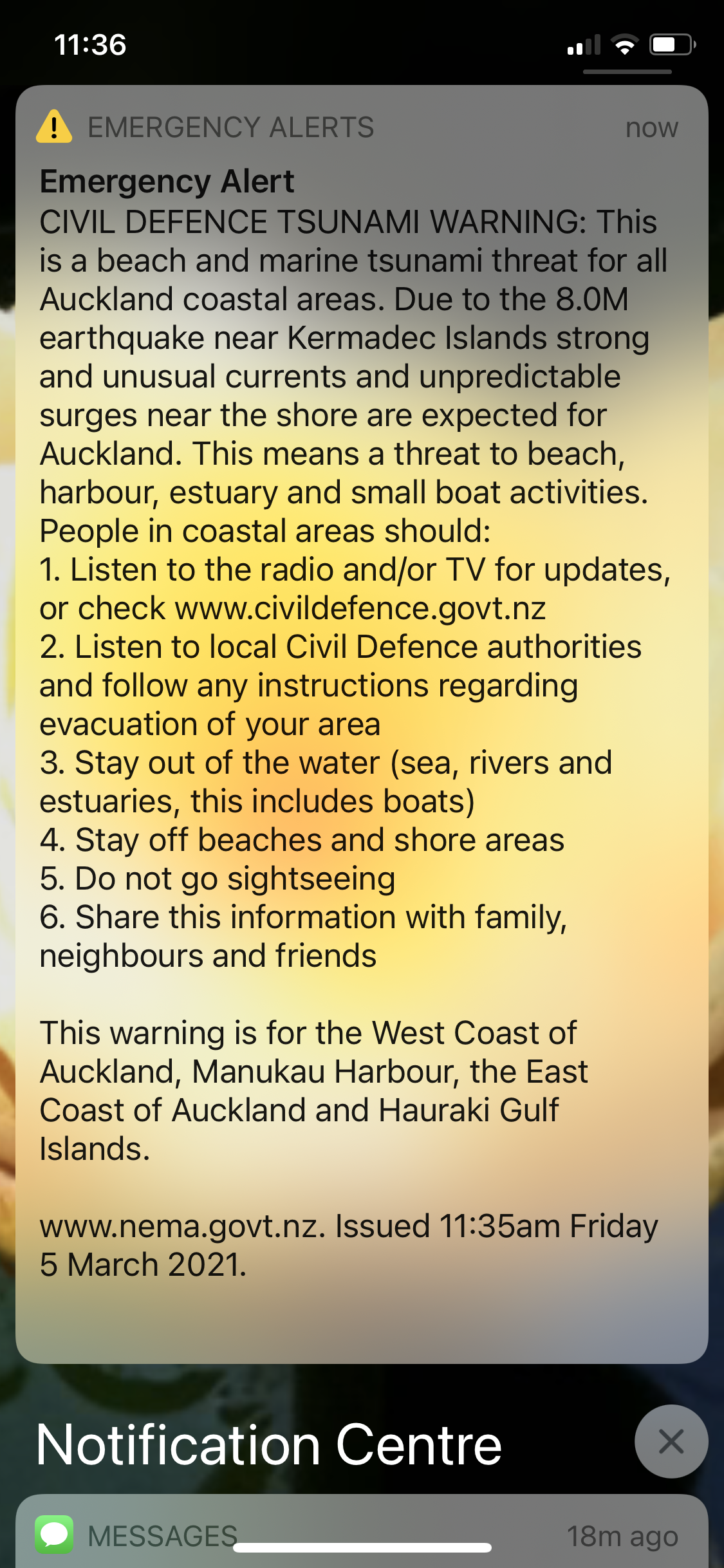First Tsunami Warning
Last Friday was an eventful day. In addition to the government announcing the Auckland lockdown would end on Sunday at 6 am (yeah!) we also had a day full of earthquakes and tsunami warnings. There are constantly little quakes around the country, and I don’t notice them in Auckland. (To track all of the seismic activity in the country, visit GeoNet.) The Friday quakes, however, were big. Coincidentally, last week was also the 10 year anniversary of the big Christchurch earthquake that decimated many structures and killed 185 people, so earthquakes were a sensitive subject for many.
At 2:27 am, the first big earthquake - a 7.2 magnitude one - took place 125 km east of the North Island off the Bay of Plenty. At 6:41 am, a larger, 8.1 magnitude earthquake took place off of the Kermadec Islands about 1000 km north. This was followed by a 7.4 magnitude quake at 8:28.
The first and third quakes resulted in tsunami warnings for much of the north and east coasts of the North Island. After the third quake, Auckland was put under an “assessment,” which, from what I can tell, is like a tornado watch: it is possible something might happen, but there’s no actual tsunami right now. I realize this is an incredibly Texan thing for me to compare it to, but that’s my reference point for natural disasters.
When my phone went off with a civil defense warning, I had a moment of “oh crap, I have no idea what to do if this turns into something major” and it was terrifying. I realized we had not prepared at all for an incredibly predictable event in New Zealand. I’ve since done a little research, and determined that there are a few key steps to take to prepare for earthquake, volcano, and tsunami warnings.
A Plan. On where to go, who is responsible for what, where to meet if separated, and other important information. A useful printable form can be found here.
A Go Bag. This should have water for 3 days, non-perishable food, medicine, basic first aid supplies, and copies of important documents, like passports and birth certificates, a battery powered radio, a flashlight/torch, cash, including coins, and matches in a waterproof container. There are lots of places that sell pre-made bags. Friends have recommended NZ Survivor, Survive-It, and Lifepac.
A Survival Kit. This could be a part of your go bag, but realistically it is a list of things you’d grab as quickly as you can. It includes blankets or sleeping bags, extra clothing, kitchen accessories like cups, plates, and utensils, some kitchen basics like trash bags, aluminium foil and plastic bags, lovies and comfort items for kids, extra personal hygiene items like toothpaste, detergent, sunscreen, and toilet paper. Multi use supples like a camp stove, duct tape, plastic tarps, dust masks, and scissors/knives are also a good idea to include. It’s a good idea to have a prioritized checklist of the things you could grab in 2 minutes, five minutes, and 10 minutes. Running drills is also a recommended step so everyone in the household knows what to do.
A bucket. Preferably with a lid. Not to get too icky, but this is for a portable toilet.
Pets. And all of the things you will need to care for your pet, like food, bowls, a leash, poo bags, etc.
Fortunately, the most excitement we got from the earthquakes and tsunami warnings were a few big waves. I haven’t heard of any reports of major damages or injuries. There were a lot of cranky people who were awakened at 2:47 am and didn’t make it back to sleep on Friday, but overall this turned into a relatively uneventful event.. I think this meme sums up how Kiwis feel about Friday’s earthquakes and tsunami warnings rather accurately - an humorously:






